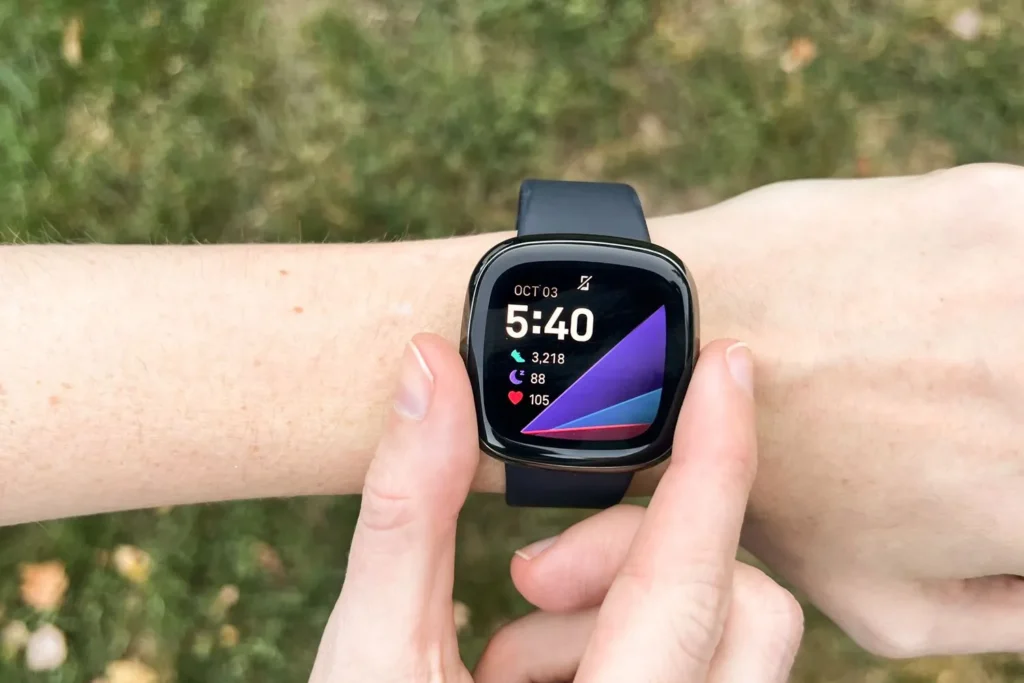Fitness Watch Heart Rate Monitoring Introduction:
Fitness Watch Heart Rate Monitoring: Fitness watches, in contemporary society are among the complements considered crucial for individuals to keep track of their health and fitness. Originally it offered a plethora of features, yet it is notable that the heart rate monitor is one of the essential ones. But do you ever take time to imagine how those slimmer devices can start estimating your pulse without any leads or sensors? It is necessary in relation to the so-called optical heart rate monitors – a modern innovation that has become the game-changer of heart rate monitoring systems. In this blog post, you will know how optical heart rate monitors work, how accurate these things are, where and when to use one, and the basic science behind it.
Understanding Fitness Watch Optical Heart Rate Monitors
Optical heart rate monitors are a key feature in most modern fitness watches. Unlike traditional EKG/ECG machines used in hospitals, which rely on electrodes to monitor the heart’s electrical activity, optical sensors use light to measure changes in blood volume. This innovative technology allows for continuous, non-invasive heart rate monitoring, making it an ideal choice for fitness enthusiasts and everyday users alike.
The Science Behind Fitness Watch Optical Heart Rate Monitoring
But in general, there are two main components in an optical heart rate monitor which includes LEDs and photodetectors. Here’s how they work:
LED Light Emission: It is a device that directs some sort of light–if you own the mark, it is green– into your skin.
Light Absorption: It radiates through the skin and even gets to the systematic circulation in the blood vessels. The distribution of light to absorb by your blood alters as you change your beats per minute B.P.M.
Photodetection: A photodetector determines how much reflected light exists in front of the sensor. As for the variations in the light intensity, the gadget determines the number of pulses per minute in your body.
This method is called photoplethysmography (PPG) It is the opposite of pulse oximetry where a sensor shines a red light into the finger to measure cuts-off oxygen-levels. It capitalise on the fact that the amount of blood at a particular period of time has the ability to alter in terms of density with beated time due to the human pulse.
Advantages of Fitness Watch Optical Heart Rate Monitors
Optical heart rate monitors offer several benefits over traditional chest straps and EKG/ECG machines:Optical heart rate monitors offer several benefits over traditional chest straps and EKG/ECG machines:
Convenience: As compared to conventional monitoring systems, these monitors are incorporated in wearable devices that would allow uninterrupted assessment without huge paraphernalia.
Non-invasive: There is no need for electrodes and wires which is suitable for wear during different activities such as fishing, traveling, working or even sleeping.
Accessibility: Seen in an assortment of fitness watches and bands, these keepsakes have thus created a wide market audience.
Accuracy vs. Convenience
One of the primary debates in heart rate monitoring is accuracy versus convenience. Traditional chest straps are known for their high accuracy because they directly measure the heart’s electrical activity. Professional athletes often prefer chest straps for their precise readings, especially during high-intensity training.
However, optical heart rate monitors offer unparalleled convenience. They allow for real-time heart rate monitoring during everyday activities such as walking, running, or cycling. While they may not always match the precision of chest straps, advancements in technology have significantly improved their accuracy.
Placement and Precision
Whether an optical heart rate monitor is highly accurate is highly contingent on where they are located. It is even more preferred that it should fit tightly on the wrist or the forearm of the user, if better outcomes are to be achieved. Position the sensors to accurately detect blood flow variations without interference from external light or movement.
Factors Affecting Accuracy
Several factors can affect the accuracy of optical heart rate monitors:
Skin Tone: Darker skin tones or tattoos can impact the light absorption and reflection, potentially leading to less accurate readings.
Movement: Intense movements or improper fit can cause the sensor to lose contact with the skin, affecting accuracy.
Environmental Light: External light sources can interfere with the sensor’s ability to detect reflected light.
The Role of SpO2 Measurement
Some of the newer fitness watches that include an optical heart rate monitor also have features for continuous SpO2 measurement, which refers to the saturation of blood with oxygen. Infrared LEDs measure oxygen absorption in the blood. Despite SpO2’s utility, the same factors influencing pulse oximetry also affect its accuracy, making it an imperfect measure.
Demystifying Light-Based Detection
Young people should know that it works with light-based detection – this is the secret of optical heart rate monitors. Here’s a deeper look into how this process works:Here’s a deeper look into how this process works:
Pressure Waves Detection: During ventricular contraction, it pushes blood through the vessels creating pressure waves referred to as pulsation. Reflective optical sensors measure these pressure waves on the basis of variation in the extent of absorbed light.
Wave Frequency Measurement: The number of pressure waves which occur in a predetermined stipulated time is used to consider the heart rate. This method is useful in that it enables the tracking of heart rates with high accuracy and time resolution.
Wrist Vein Tracking: Since the changes in the concentration of blood in the veins of the wrist are directly proportional to the heart rate, optical sensors give a constant heart rate inclusive of operations.
Tracking Blood Flow Changes
In addition, potential features of the optical heart rate monitors include the ability to track the changes of blood flow under the skin. These monitors are capable of detecting fluctuations in the reflected light, and hence, report the flux in blood flow, which yields satisfactory heart rate resolution.
Enhancing Fitness and Health Strategies
The continuous data provided by optical heart rate monitors can significantly enhance your fitness and health strategies. Here are a few ways these devices can benefit you:
Workout Optimization: By monitoring your heart rate, you can ensure you are training within your target heart rate zone, maximizing the effectiveness of your workouts.
Health Monitoring: Continuous heart rate monitoring can help detect irregularities or trends that may indicate potential health issues, prompting you to seek medical advice.
Recovery Tracking: Monitoring your resting heart rate can provide insights into your recovery and overall fitness levels.
Conclusion
Indeed, they have appeared in a world where people consider their health and fitness as a key to success. It combines precision with portability, enabling athletes and normal people to have instantaneous views of their heart rate. However, this does not mean people will not heavily rely on these devices in future wearables. As wearable technology continues to advance, these smart devices will become vital in health and wellness.
Whether it is for some active routine activity, or more of the day to day health tracking, having the knowledge on how an optical heart rate monitor works can help you make the right choice and at the right time. As the above devices smoothly blend in the ready-to-wear apparels, these monitors are not only trendy but also essential in our daily active lives.






